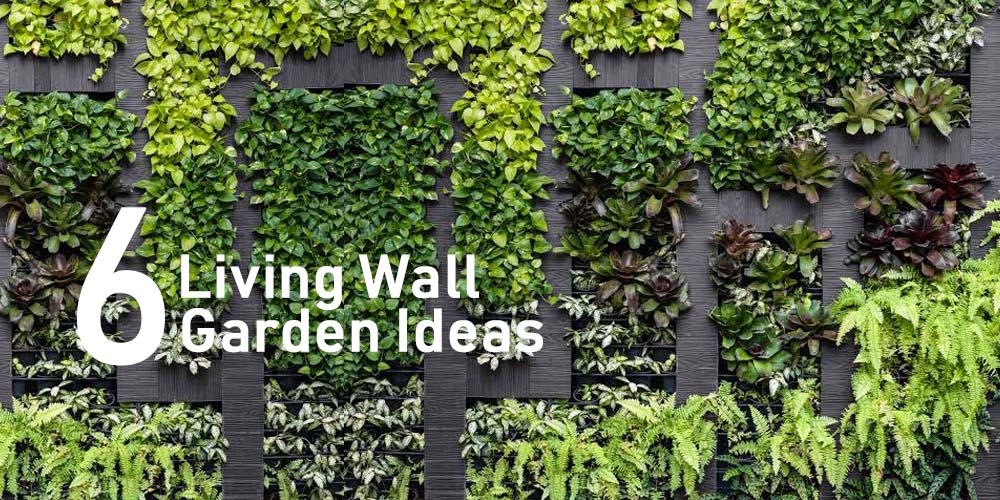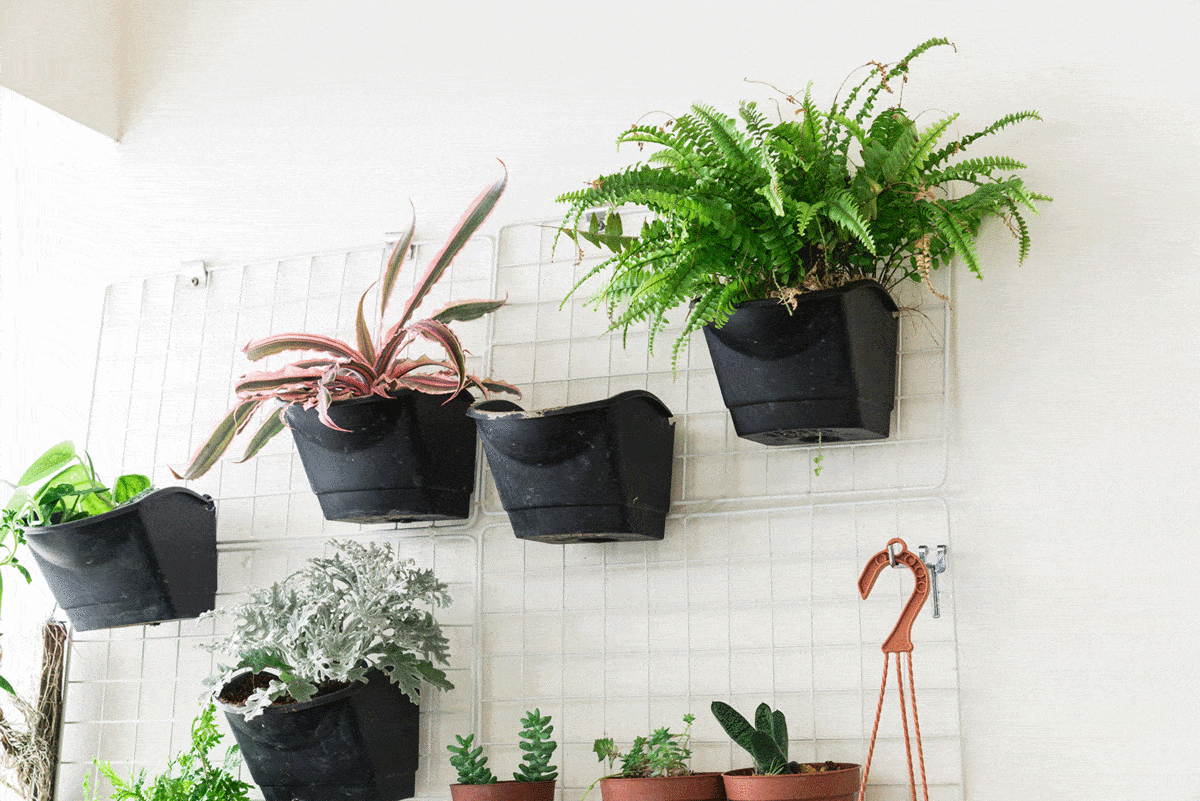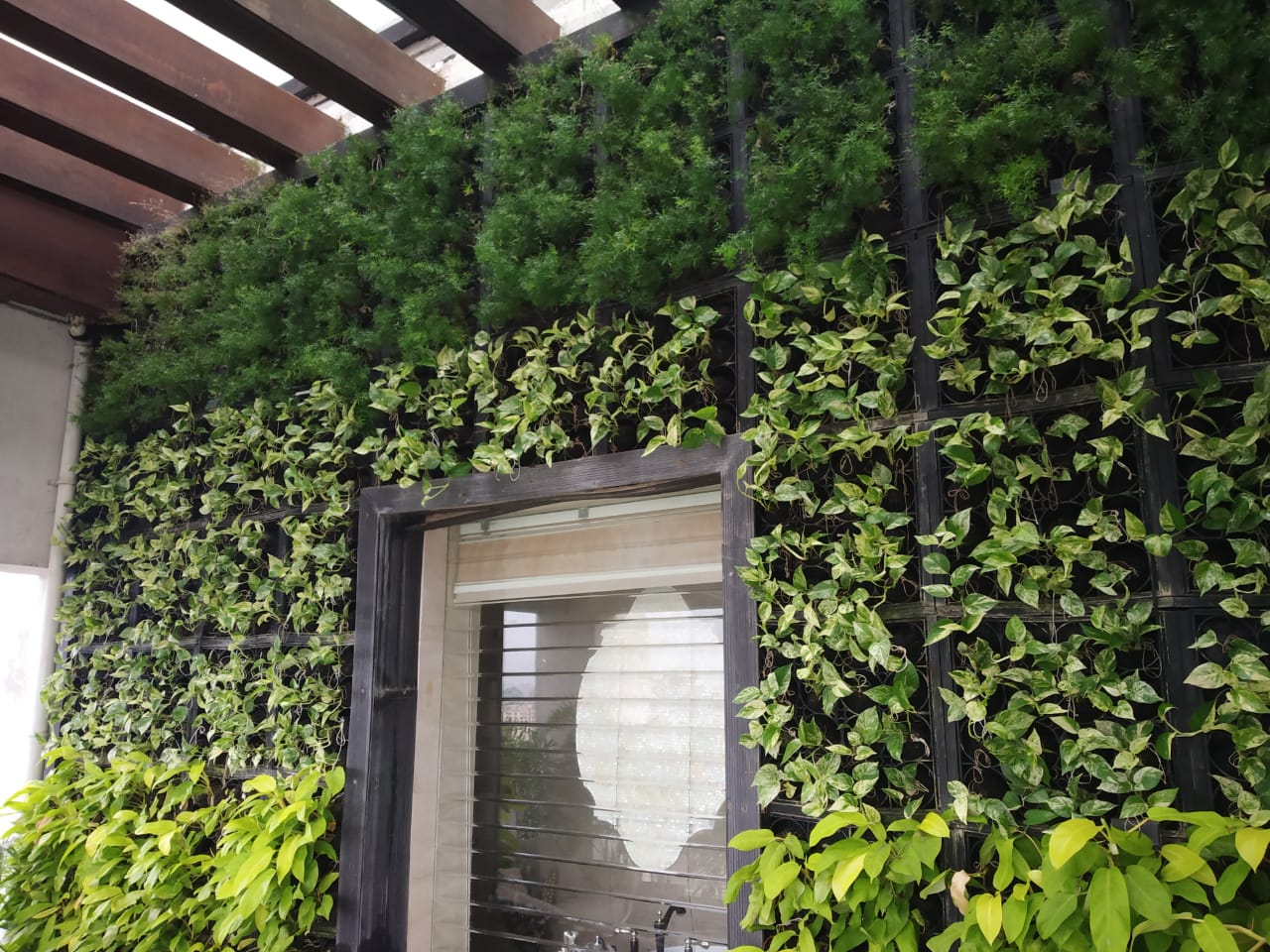
02 Dec 6 Living Wall and Vertical Garden Ideas – 2020
A living will or a vertical wall garden can be simply termed as a collection of plants mounted on the wall. Vertical gardens on walls are currently trending in the global interior design circuit. This is because an indoor vertical wall garden is capable of lifting your mood, greening your surroundings and improving the quality of the air inside your house.
In fact, according to NASA, plants in a vertical wall garden filter toxins, turn carbon dioxide into oxygen, absorb harmful VOCs, formaldehyde, and benzene. In short, the presence of a vertical wall garden indoor is capable of undoing much of the harms inflicted by home fragrance products, rugs, cigarettes, and plastic, etc.
Vertical wall gardens are going to be very much in vogue in the year 2020. Other reasons behind their popularity are –
- Vertical gardens on walls take up less space, especially when your home is devoid of a yard, patio, or balcony.
- They can disguise an ugly wall or block an unpleasing view.
- They are of high aesthetic value.
- DIY vertical wall gardens end up recycling a lot of waste materials.
- They can survive without soil.
- Vertical wall gardens give you the opportunity to grow some vegetables, herbs etc in a compact way and in an urban setting.
Top 6 Vertical Wall Garden Ideas
Modern Kitchen Garden
Pots, trays, holders – use anything that you can find to create your own DIY vertical kitchen garden. This idea is for those who love cooking as you can simply grow your favorite assortment of herbs like basil, thyme, parsley, coriander etc on your kitchen wall. Though you can seek professional help for this, purchasing a vertical wall garden kit and calling a technician for the fittings – is all you need to do.
A Vertical Tray Garden
If you have a small wall space to spare for your vertical wall garden indoor, use a rectangular, plastic tray. For individual plant varieties, divide the tray space into cells, slanted at a 30-degree angle with bottom holes (for drainage and air circulation). These trays can be purchased and such a vertical garden on the wall looks nothing short of wall art. Use plants with shallow roots.
Hanging Planters
Hanging planters can be used indoors or outdoors to create beautiful vertical wall gardens. You can purchase such planters. Framed plywood planters, metallic frame planters, clay planters, planters resembling farm pots – the choice is endless.
DIY Vertical Wall Garden with Tin Cans or Plastic Bottles
Soda lovers can now recycle all their waste tin cans and plastic bottles by creating their own vertical wall garden outdoor. Such a design looks good on the balcony or the little space outside your home. You can spray-paint the cans and the bottles, create a frame with strings and make dents under the containers for drainage and aeration and you are good to go.
Mediterranean Inspired Green Wall
If you are fond of lush greenery then contact a professional gardening company to create a visually stimulating green wall using plants and grasses of tropical varieties that come in varied textures and colors. Such a wall can adorn your outdoor staircase wall or even the façade of your house.
Geometric/Mosaic Living Walls
These walls can be created by professionals strictly for aesthetic purposes. They usually have a clean, striped contemporary look or fluid shapes consisting of succulents and grasses. Such a vertical wall garden can adorn a wall in your home’s atrium, next to your swimming pool or even outdoors. They need a large wall space to look appealing.
Artificial vertical wall gardens can also be created with professional help. They are high on the aesthetic quotient, provide a greening effect and require no maintenance. However, before you make the decision to go for a vertical wall garden, consider factors like space availability, drainage issues, types of plants you want to grow, etc.








